If you think growing eggplants requires a big garden and lots of space, think again! With a little creativity and some household ingredients, you can grow beautiful, healthy eggplants hanging upside down, even if you live in an apartment or have no soil to spare. The secret? A surprising combination of eggs and bananas that naturally boosts growth and provides all the nutrients your plants need.
This innovative gardening method is changing how urban gardeners grow vegetables at home. Whether you’re a beginner or an experienced gardener looking for something new, this guide will show you exactly how to grow eggplants upside down — easily, affordably, and productively.
Why Grow Eggplants Upside Down?
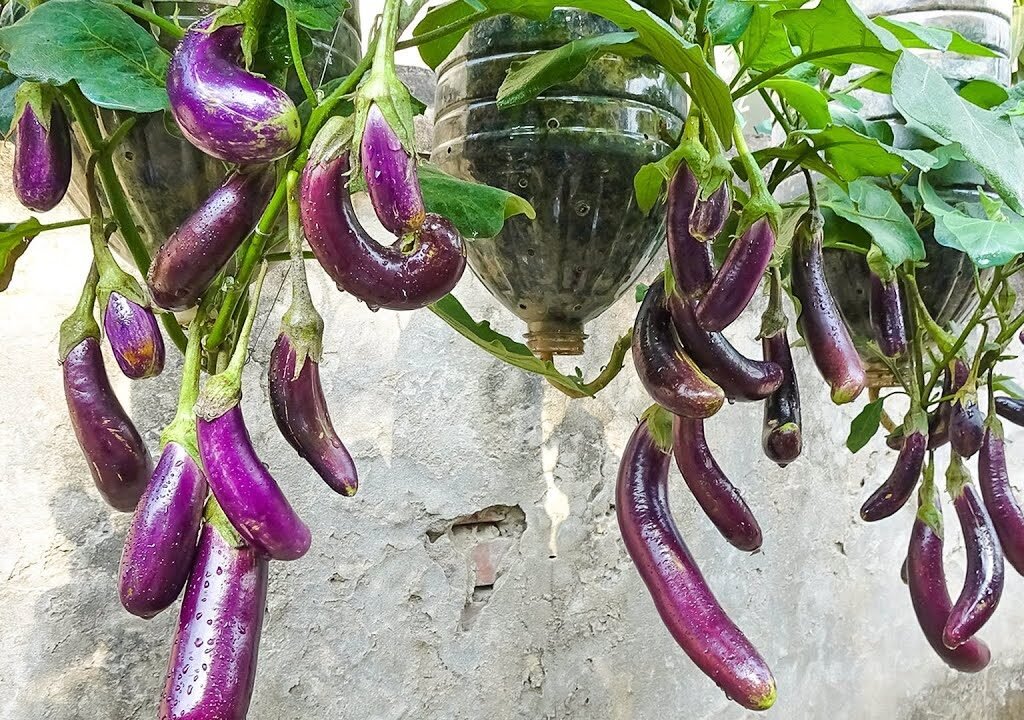
Growing plants upside down is not just a fun experiment — it’s actually a smart gardening technique with multiple benefits:
- Saves Space: You can hang containers from balconies, patios, or ceilings — perfect for small apartments or homes without gardens.
- No Weeding: Since the soil is contained, you don’t have to worry about weeds stealing nutrients.
- Improved Air Circulation: Hanging plants get better airflow, reducing the risk of fungal infections.
- Easy Water Drainage: Excess water drips away naturally, preventing root rot.
- Decorative Appeal: Hanging eggplants look beautiful and create a mini-green oasis wherever they grow.
The Secret Ingredients: Eggs and Bananas
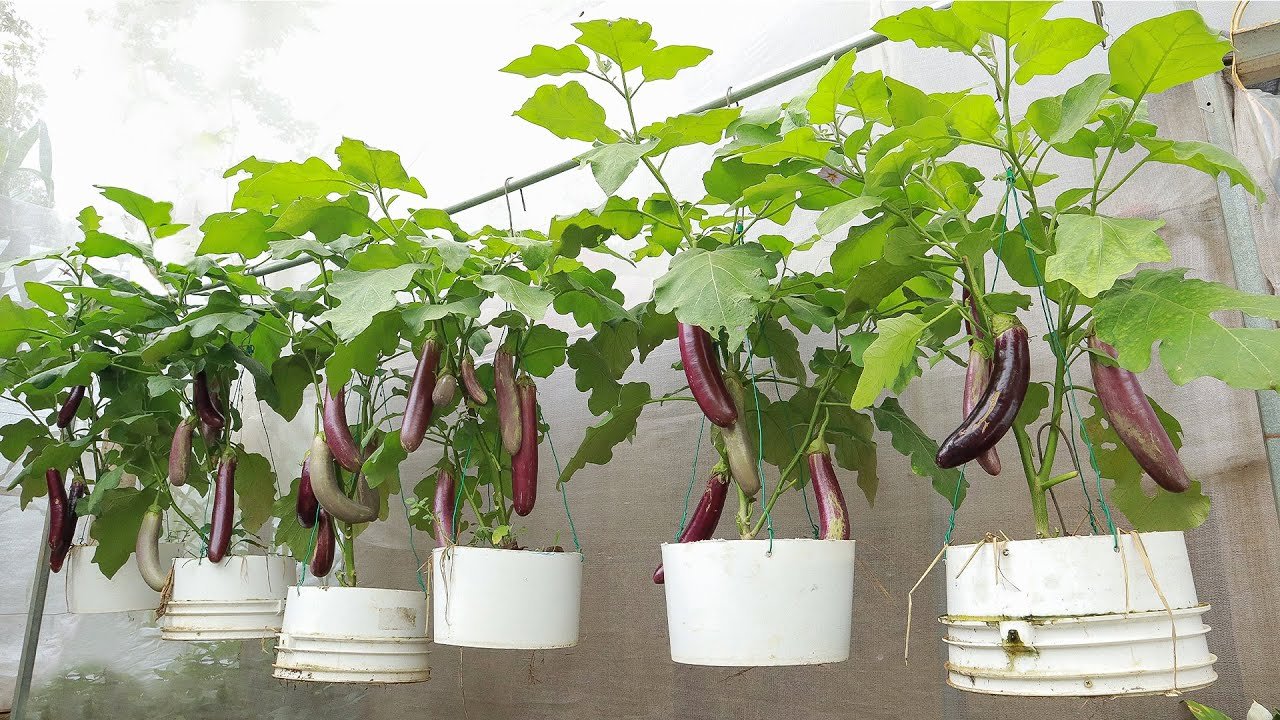
You might wonder why eggs and bananas are used in this method. These everyday kitchen items provide organic nutrition that helps eggplants grow strong and produce plenty of fruit.
Eggs – The Natural Fertilizer
Eggs are packed with calcium, nitrogen, and protein. When buried in soil, they decompose slowly, releasing essential nutrients that strengthen the roots and stems. Calcium from eggshells prevents blossom end rot, a common problem in fruiting plants like tomatoes, peppers, and eggplants.
Bananas – The Potassium Booster
Bananas are rich in potassium, phosphorus, and magnesium — all crucial for flowering and fruiting. Adding banana peels or pieces to the soil enhances flower production and encourages healthy, shiny eggplants.
When eggs and bananas break down together, they create a powerful natural compost that supports vigorous growth and improves soil fertility without any chemicals.
What You’ll Need
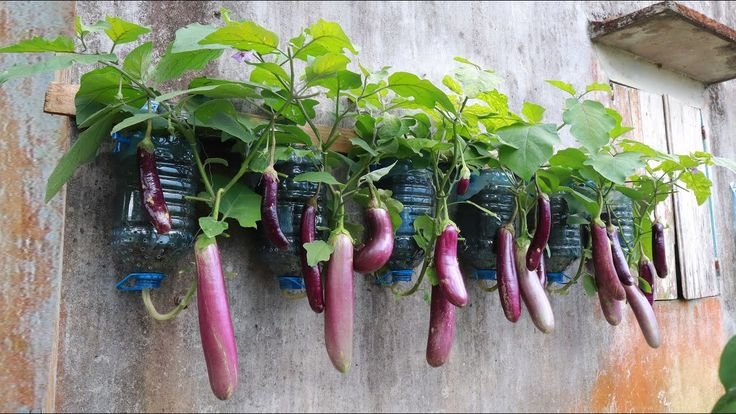
Before you start, gather the following materials:
- 1 medium-sized eggplant seedling (or seeds)
- 1 large plastic bottle, bucket, or hanging pot
- 1 banana (ripe or slightly overripe)
- 1 raw egg (with shell)
- Quality potting mix or garden soil
- Watering can or spray bottle
- Rope or chain for hanging
- A knife or drill to make holes
Step-by-Step Guide to Growing Eggplants Upside Down
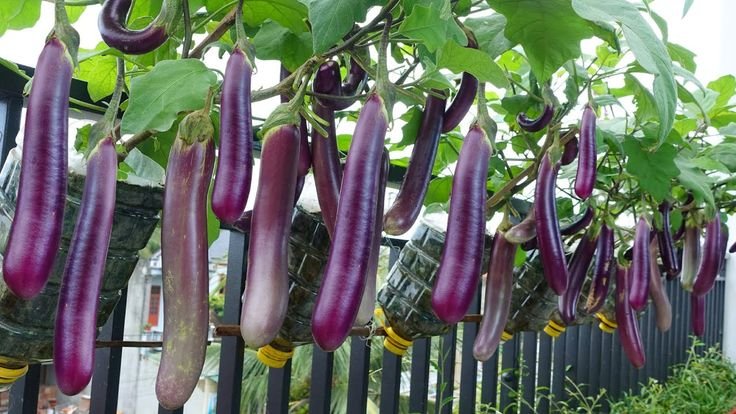
Step 1: Prepare Your Container
Choose a container with a sturdy base — a 5-liter plastic bottle, hanging bucket, or pot works great. Cut a circular hole (about 5–6 cm wide) at the bottom, where your eggplant will hang from. Drill 3–4 small holes on the top for drainage and airflow.
If you’re using a plastic bottle, remove the cap completely and smooth the edges to avoid damaging the stem.
Step 2: Add the Secret Ingredients
At the bottom (which will now be the top when hung), place:
- One raw egg (unbroken)
- Half of a banana, chopped into small pieces
These ingredients will slowly decompose and feed your plant over time. Cover them lightly with a layer of soil to avoid unpleasant odors or attracting insects.
Step 3: Prepare the Soil Mix
Mix equal parts of garden soil, compost, and coco peat or perlite. This ensures good drainage and root aeration — essential for upside-down growth. Fill your container about three-quarters full, leaving space for planting.
Step 4: Insert the Seedling
Carefully take your eggplant seedling and gently insert it through the bottom hole so that its root ball sits inside the container and the stem and leaves hang outside. Add more soil around the roots to secure it in place.
If you’re starting from seeds, plant them inside the container near the bottom hole, ensuring they have enough light and moisture to germinate.
Step 5: Hang the Container
Use strong rope or chain to hang your container in a sunny location — eggplants need at least 6–8 hours of sunlight daily. Balconies, verandas, and patios are perfect spots.
Make sure the hanging setup is stable; eggplants can become heavy as they mature.
Step 6: Watering and Maintenance
Water gently from the top using a watering can or bottle until water drips slightly from the bottom hole. The hanging position allows excellent drainage, so check the moisture regularly.
Avoid overwatering — the soil should stay moist but not soggy. You can add a layer of dry leaves or mulch on top to retain moisture.
Bonus Tips for Bigger Yields
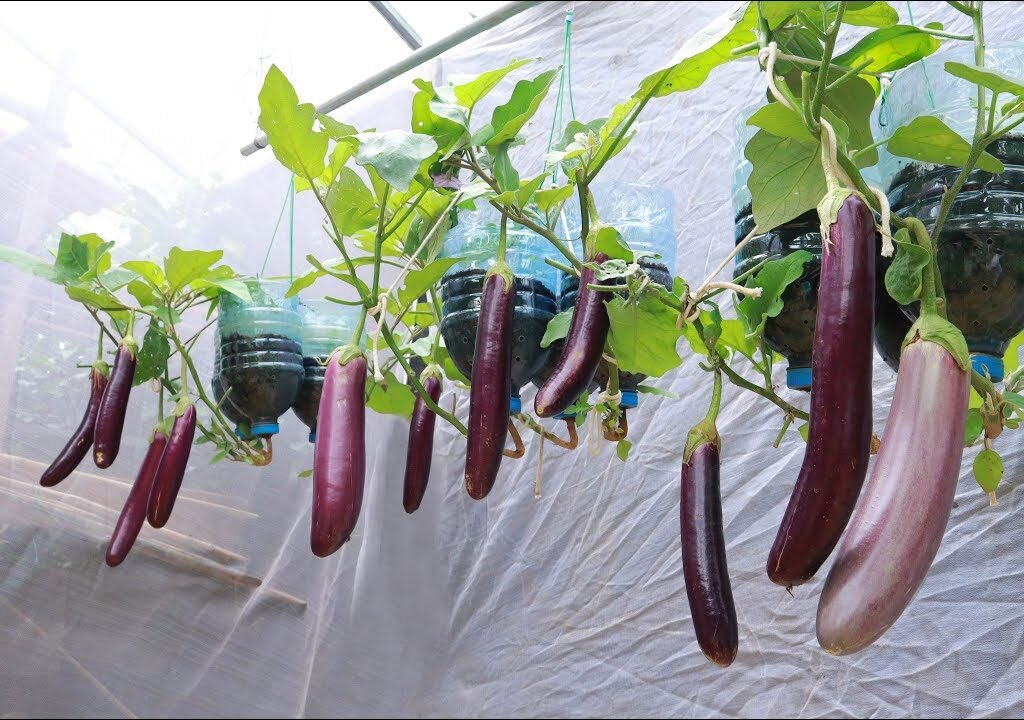
- Pollination Help: Since eggplants rely on pollination, gently shake the flowers or use a small brush to transfer pollen between blooms.
- Use Compost Tea: Every two weeks, feed your plant with diluted compost tea or banana peel water to promote fruiting.
- Prune Wisely: Remove yellow leaves and excess branches to improve air circulation and direct energy to fruit growth.
- Add Support: When eggplants start forming, use small ties or nets to support the hanging fruits to prevent stem breakage.
- Harvest on Time: Pick eggplants when they are glossy and firm — overripe ones become bitter and reduce the plant’s productivity.
The Science Behind Upside-Down Growth
You might wonder how plants manage to grow upside down. The answer lies in gravitropism — plants naturally sense gravity and adjust their growth direction. Even when the roots are above, the stem and leaves orient themselves toward light, allowing photosynthesis to occur normally.
This unique setup also helps nutrients flow efficiently, reduces soilborne diseases, and keeps pests away from the fruits.
Benefits of Using Natural Fertilizers (Eggs & Bananas)
Using natural materials like eggs and bananas has several long-term benefits:
- Eco-Friendly: No synthetic fertilizers or harmful chemicals.
- Cost-Effective: Both ingredients are easily available and often household waste.
- Improves Soil Health: Encourages beneficial microbes and earthworms.
- Sustained Nutrition: They decompose slowly, ensuring consistent nutrient release.
This makes the method ideal for organic gardeners and anyone seeking sustainable food production at home.
Common Problems and How to Fix Them
Even though this method is simple, here are a few issues you might encounter — and how to solve them:
- Yellowing Leaves: Could indicate overwatering. Allow soil to dry slightly before watering again.
- Small or Few Fruits: The plant might not be getting enough sunlight or nutrients. Move it to a sunnier spot or add compost tea.
- Pests on Leaves: Spray a mild neem oil solution weekly to keep insects away naturally.
Final Harvest and Results
Within 70–90 days, your hanging eggplant plant will start producing glossy, firm fruits ready for harvest. You’ll be amazed at how productive a single hanging container can be!
The combination of banana and egg nutrients ensures strong roots, lush foliage, and healthy fruits — all grown organically, without taking up ground space. Plus, the beautiful hanging setup doubles as a decorative green accent for your balcony or kitchen garden.
Conclusion
You don’t need a big backyard or expensive tools to grow your own vegetables. With creativity, patience, and a few kitchen ingredients, you can transform even the smallest space into a productive mini-garden.
Growing eggplants upside down using eggs and bananas is more than a gardening hack — it’s a step toward sustainable, eco-friendly living. Try this simple method today, and soon you’ll be harvesting fresh, home-grown eggplants right from your balcony — no garden required!
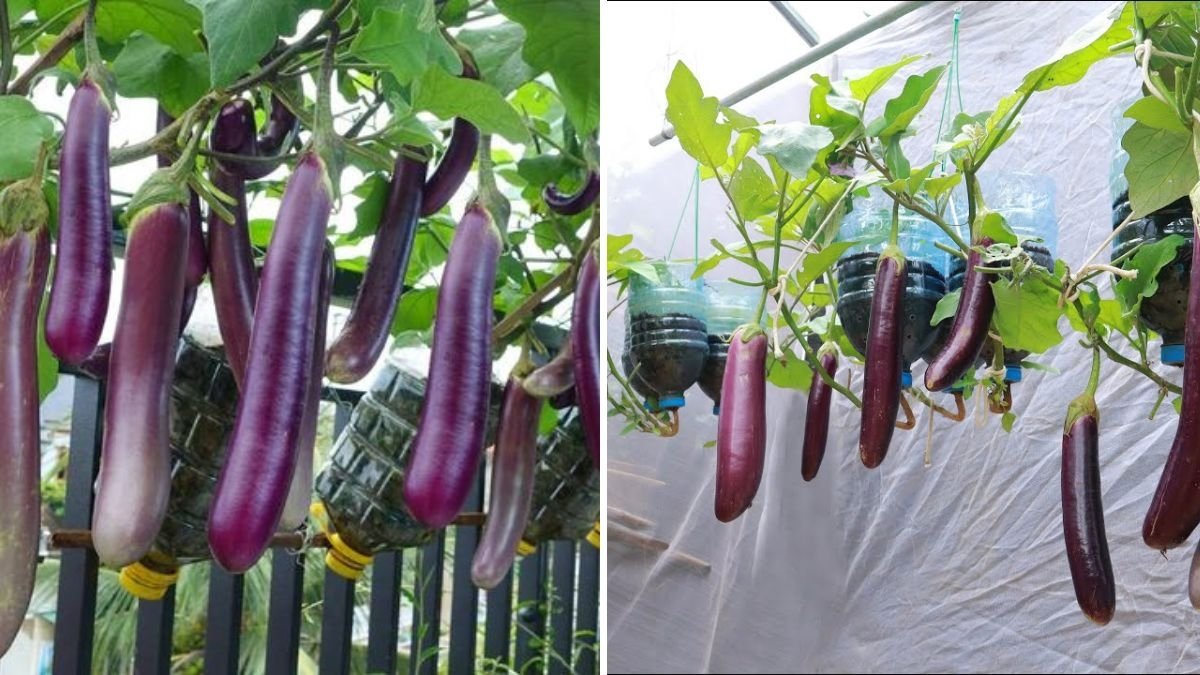
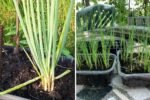
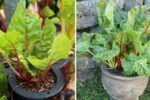
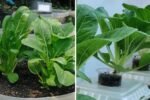
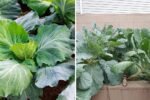
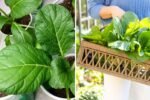
Leave A Comment